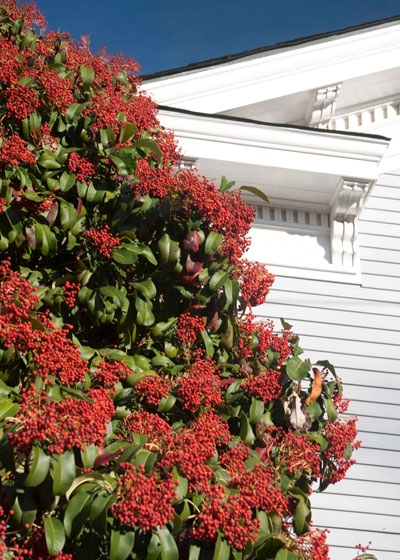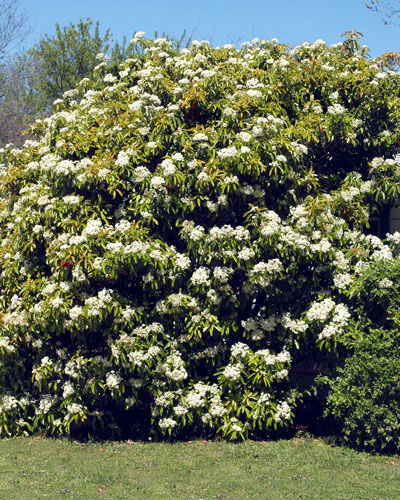The Retro: Chinese Photinia
You won’t find this venerable old plant in garden centers. If you want to search for it online, it’s Photinia serrulata, or Chinese photinia.
Where you will find it is in older neighborhoods where it’s been growing for decades. Not only are those old plants probably still there, but seedlings have probably come up beneath the hedgerows. It’s not especially invasive, but it does send up seedlings.

Clusters of Chinese photinia fruit add brilliant color to the winter landscape.
So you probably recognize the name “photinia” in this discussion, and yes, this is sister to redtip photinias. But it’s by far the better sibling in that it seems to be much more durable. Where redtips have fallen like flies to the fatal Entomosporium fungal leaf spot, Chinese photinias seem less susceptible. Having said that, you will occasionally see the disease overtake them and kill them just as it does redtips, so don’t assume that they’re immune.

Chinese photinia growing in a large, older backyard. This plant is probably 50 to 60 years old.
Chinese photinias are taller plants, growing to 18 or 20 feet tall and wide. The plants lack the bright red new growth in the spring that give redtips their name, but they more than make up for it by having much showier flowers and tons of colorful fruit all winter long. It should be noted that the flowers have a rather unpleasant aroma, so Chinese photinias should be planted away from the house.
If you like the looks of Chinese photinias, I might suggest trying a small number. They’ll fill a large space, plus if they do develop the leaf spot, you won’t stand to lose quite as much time and effort in replacing them. And in the more likely event that they succeed, you’ll still have plenty to love and nurture. They’ll pay you back handsomely.

